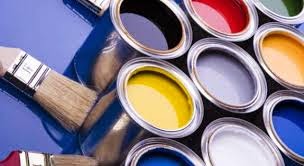When painting facades it is not only important to think about the aesthetics, but it is also necessary to take into account the facade’s protection, because these types of areas are exposed to the elements.
The main corrosive agent of walls in the open is the moisture created by the rains, because it builds up over the years without us even noticing it until it causes serious damages, to both the exterior and the interior of a building; creating problems such as leaks, rust, niter, waterlogging, among many others. In many cases these damages reach the point of being unfixable, making it necessary to demolish and rebuild entire areas.
Impernet Impermeabilizantes, a leading waterproofing company, recommends painting the facades using paints made of acrylic resin to protect the walls against water seepage and to avoid the most of the potential damages caused by moisture, as mentioned above.
Acrylic paints (also known as elastomers) are essentially very similar to other paints: they can be diluted in water and with them you can form any color palette desired. But due to its chemical composition they have the ability to form an impermeable plastic layer on the surfaces where they are used, sealing perfectly and completely avoiding the accumulation of moisture that corrodes walls.
This type of paints also has an application process similar to the other paints...
1. The first step is to thoroughly clean the area to be painted, removing dust and dirt as much as possible, completely removing any residual paints previously applied. This is in order to ensure that the waterproof coating has an effective adherence and does not present bubbles.
2. Then, the area has to be coated with any water based primary sealant. This will form an intermediate layer between the wall and the paint that helps to seal small cracks and strengthens the adherence. This primary layer must be allowed to dry for approximately 30 minutes.
3. The next thing to do is to properly prepare the paint, dissolving it in water at a ratio of 1 to 10; that is: if you are going to use 1 gallon of paint, then it is necessary to dilute it with 1/10 gallon of water.
4. Once the paint is prepared it must be applied by brush or roller, trying to spread it as evenly as possible to avoid lumps or runoff. This layer must be allowed to dry for a minimum of 2 hours.
5. Optional, if you want to increase the facade’s protection, you can apply a second coat of paint; exactly repeating the previous step.
While the acrylic based paints have a higher cost and lower performance than the conventional paints, it is worth making use of them when it comes to exterior coating; because with a little more investment you received many benefits, taking also into account that their service life can reach 10 years.
http://amigosparasiempre4.blogspot.com
The main corrosive agent of walls in the open is the moisture created by the rains, because it builds up over the years without us even noticing it until it causes serious damages, to both the exterior and the interior of a building; creating problems such as leaks, rust, niter, waterlogging, among many others. In many cases these damages reach the point of being unfixable, making it necessary to demolish and rebuild entire areas.
Impernet Impermeabilizantes, a leading waterproofing company, recommends painting the facades using paints made of acrylic resin to protect the walls against water seepage and to avoid the most of the potential damages caused by moisture, as mentioned above.
Acrylic paints (also known as elastomers) are essentially very similar to other paints: they can be diluted in water and with them you can form any color palette desired. But due to its chemical composition they have the ability to form an impermeable plastic layer on the surfaces where they are used, sealing perfectly and completely avoiding the accumulation of moisture that corrodes walls.
This type of paints also has an application process similar to the other paints...
1. The first step is to thoroughly clean the area to be painted, removing dust and dirt as much as possible, completely removing any residual paints previously applied. This is in order to ensure that the waterproof coating has an effective adherence and does not present bubbles.
2. Then, the area has to be coated with any water based primary sealant. This will form an intermediate layer between the wall and the paint that helps to seal small cracks and strengthens the adherence. This primary layer must be allowed to dry for approximately 30 minutes.
3. The next thing to do is to properly prepare the paint, dissolving it in water at a ratio of 1 to 10; that is: if you are going to use 1 gallon of paint, then it is necessary to dilute it with 1/10 gallon of water.
4. Once the paint is prepared it must be applied by brush or roller, trying to spread it as evenly as possible to avoid lumps or runoff. This layer must be allowed to dry for a minimum of 2 hours.
5. Optional, if you want to increase the facade’s protection, you can apply a second coat of paint; exactly repeating the previous step.
While the acrylic based paints have a higher cost and lower performance than the conventional paints, it is worth making use of them when it comes to exterior coating; because with a little more investment you received many benefits, taking also into account that their service life can reach 10 years.











0 komentar:
Posting Komentar